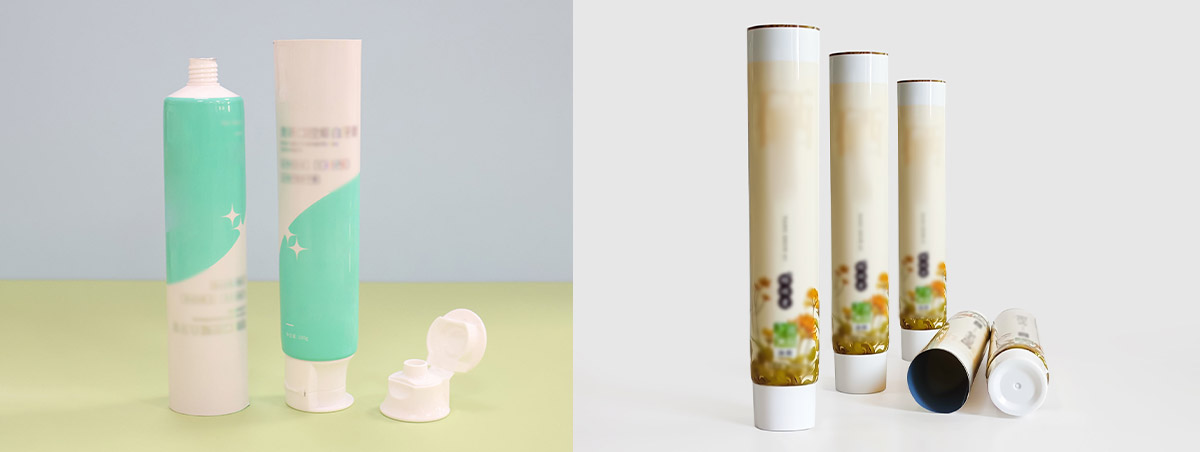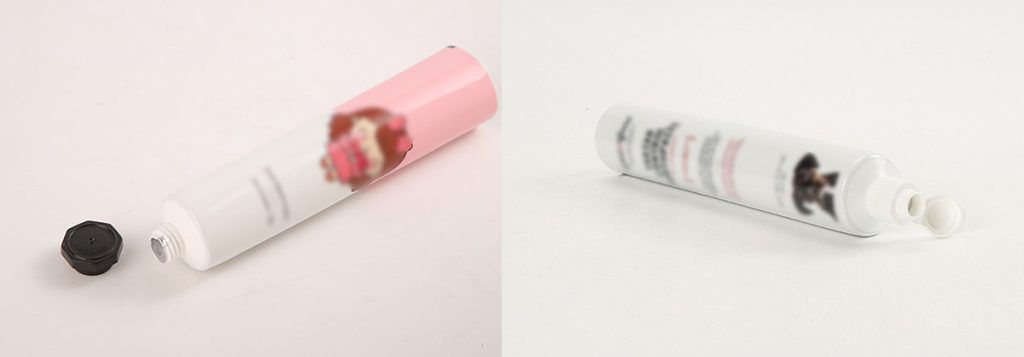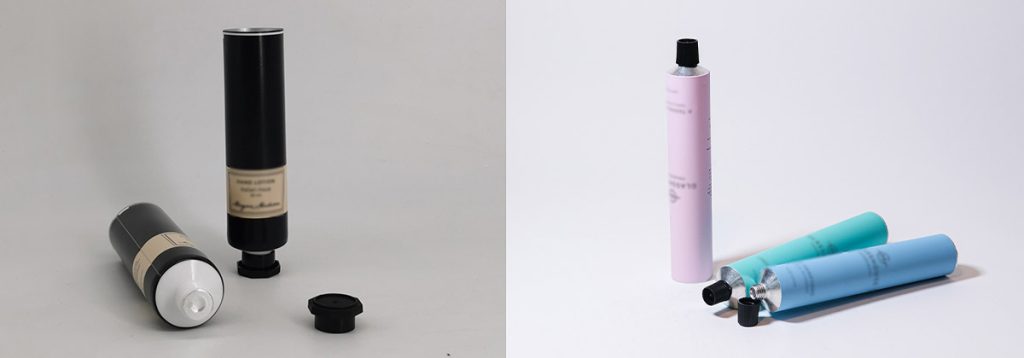

Innovations in laminated tubes now give manufacturers a real edge over traditional packaging options like recyclable mono-material tubes. The push for sustainability drives a wave of eco-friendly packaging solutions across the industry. Recent advances in lami tube making machine respond directly to these trends.
- Many companies invest in advanced machinery that supports recyclable materials.
- Laminated tubes gain popularity as consumers seek sustainable packaging.
- Energy-efficient processes help manufacturers attract environmentally conscious buyers.
This innovation not only benefits the environment but also meets the rising expectations of brands and end users.
Key Takeaways
- Lami tubes are gaining popularity as sustainable packaging options, driven by consumer demand for eco-friendly materials.
- Investing in mono-material designs simplifies recycling and enhances the recyclability of lami tubes, making them more appealing to environmentally conscious consumers.
- Automation in lami tube production improves efficiency and reduces waste, helping manufacturers meet sustainability goals.
- Collaboration between manufacturers and recycling facilities is essential for improving the recyclability of lami tubes and supporting a circular economy.
- Brands that prioritize consumer feedback and invest in sustainable packaging solutions can gain a competitive edge in the market.
Recyclability Challenge
Environmental Impact
Manufacturers face several challenges when they try to improve the recyclability of lami tubes. The main issue comes from the complex structure of laminate tubes. These tubes often use multiple layers, which makes material separation difficult during recycling. The following table compares the recyclability challenges between laminate tubes and recyclable HDPE tubes:
| Challenge | Laminate Tubes | Recyclable HDPE Tubes |
|---|---|---|
| Material Separation | Difficulties due to complex multilayer structures | Easier separation |
| Production Costs | Higher due to multilayer complexity | Generally lower |
| Regulatory Scrutiny | Increasing scrutiny from sustainability initiatives | Less scrutiny |
| Meeting Recycling Standards | Traditional ABL tubes struggle to meet standards | More compliant |
The Tube Recycling Project highlights that the industry struggles with diverse designs and non-recyclable materials in laminate tubes. Collaboration among stakeholders becomes essential to overcome these challenges. Manufacturers must invest in new technologies and processes to make lami tubes more recyclable. They also need to use recyclable materials to reduce environmental impact.
Consumer Demand
Consumers now prioritize packaging that supports sustainable practices. They want products that use recyclable materials and minimize harm to the environment. This shift in preference drives manufacturers to adopt recyclable and eco-friendly solutions. Many companies respond by developing lami tubes that meet both consumer and regulatory demands.
Growing awareness of sustainability reshapes the global market for laminated tubes. Buyers choose products based on their environmental impact. Manufacturers see increased demand for recyclable packaging. They must address challenges in design and production to satisfy these expectations.
Tip: Brands that listen to consumer feedback and invest in recyclable packaging gain a competitive advantage in the market.
Lami Tube Innovations
Mono-Material Design
Mono-material design marks a major innovation in the lami tube sector. Manufacturers now focus on creating tubes from a single type of plastic, which simplifies recycling and supports circular innovation. This approach reduces the complexity of material separation and increases the purity of recycled plastics. Companies like Colgate-Palmolive and EPL have set new standards with their recyclable lami tube and Platina tubes. These products offer 100% recyclability, superior functionality, and durable shelf life. Both tubes meet strict sustainability requirements and hold certifications from organizations such as APR and RecyClass.
- Mono-material design:
- Simplifies recycling processes.
- Improves the value of recycled materials.
- Faces challenges in high-barrier applications and global standardization.
Note: Mono-material lami tube solutions help brands meet consumer demand for sustainable packaging innovation, but technical challenges remain in applications that require advanced barrier properties or heat resistance.
| Feature | Colgate-Palmolive’s Recyclable Lami Tube | EPL’s Platina Tube |
|---|---|---|
| Recyclability | 100% recyclable | 100% recyclable |
| Functionality | Superior functionality | Excellent functionality |
| Product Stability | Maintains product stability | Maintains product stability |
| Shelf Life | Durable shelf life | Durable shelf life |
| Certification | APR approved | APR and RecyClass certified |
| Eco-friendliness | Yes | Yes |
Barrier Properties
Barrier properties play a crucial role in the performance of lami tube packaging. Recent innovation has led to the use of advanced barrier materials such as EVOH and PVOH. Essel Propack’s Platina 250 and Green Maple Leaf 300 tubes demonstrate improved performance of barrier layer, using less than 5% of these materials. PVOH offers even greater protection than EVOH barrier, making these laminated tubes suitable for sensitive contents.
| Company | Product Name | Barrier Material | Percentage Used | Performance Comparison |
|---|---|---|---|---|
| Essel Propack | Platina 250 | EVOH | < 5% | Improved barrier properties |
| Essel Propack | Green Maple Leaf 300 | PVOH | < 5% | More effective than EVOH |
Plasma coating technology represents another packaging innovation. It provides an oxygen or solvent barrier, eliminates leak issues, and reduces product waste. These advancements allow lami tube industry to meet new packaging regulations and compete directly with plastic squeeze tubes made from HDPE.
Tip: Brands that invest in barrier property innovation can extend product shelf life and improve consumer satisfaction.
Automation in Manufacturing
Automation drives efficiency and quality in lami tube production. Laminated tube making machine uses IoT, AI, and machine learning to monitor operations and predict maintenance needs. This technology reduces downtime and ensures consistent product quality. Manufacturers also adopt energy-efficient motors and smart technology integration to minimize waste and lower their carbon footprint.
- Key benefits of automation:
- Enhances operational efficiency.
- Enables real-time monitoring and predictive maintenance.
- Supports the use of eco-friendly materials and post-consumer recycled content.
- Facilitates chemical recycling methods for new resin creation.
- Improves product safety with antimicrobial coatings and biodegradable materials.
| Aspect | Contribution to Sustainability and Recyclability |
|---|---|
| Eco-friendly materials | Machines can utilize materials that are less harmful to the environment. |
| Smart technology integration | Enhances efficiency and reduces waste during production. |
| Multi-layer design | Allows for the creation of tubes that can be designed specifically for recyclability. |
Albéa’s Greenleaf™ and Gualapack’s flexible packaging solutions showcase how automation and process optimization lead to high-quality, sustainable lami tube products. In-line digital printing offers unmatched decorating possibilities, increasing product appeal in consumer markets. The bottle-to-tube process converts PET bottles into recyclable tubes, reducing material usage and CO2 emissions.
Callout: The integration of lami tube making machines and automated systems supports the industry’s shift toward sustainable packaging innovation and circular innovation.
Recycling Compatibility
Sorting Improvements

Sorting technology plays a key role in the recycling process for lami tubes. Modern recycling centers use advanced optical sorters and near-infrared (NIR) sensors. These machines quickly identify and separate different types of plastics. When manufacturers design lami tubes with mono-materials, such as polypropylene or polyethylene, these tubes become easier to sort. This improvement increases the chances that tubes enter the correct recycling stream.
Manufacturers now label tubes more clearly. They use standardized symbols and color codes. These changes help both consumers and recycling facilities recognize recyclable tubes. As a result, fewer tubes end up in landfills. Automated sorting systems also reduce contamination in recycled materials. This leads to higher quality recycled plastics and supports a circular economy.
Tip: Clear labeling and mono-material design make it easier for recycling facilities to process lami tubes efficiently.
Facility Collaboration
Collaboration between recycling facilities and lami tube manufacturers has become essential for improving recycling compatibility. Gualapack introduced Innoweb Mono tubes made entirely from polypropylene. These tubes fit seamlessly into the existing PP recycling stream. This direct partnership between manufacturers and recyclers ensures that tubes can be collected, sorted, and recycled without extra steps.
The Lamiflex recycling concept also demonstrates strong cooperation. This initiative focuses on closing the material loop for Lamiflex plastic packaging. Manufacturers and recycling centers work together to develop processes that keep materials in use for longer. By sharing knowledge and resources, they create packaging that meets recycling standards and supports sustainability goals.
- Key benefits of facility collaboration:
- Increases recycling rates for laminated tubes.
- Reduces waste sent to landfills.
- Encourages innovation in packaging design.
Note: Strong partnerships between manufacturers and recycling facilities drive progress toward a more sustainable packaging industry.
Sustainability Trends
Material Choices
Manufacturers now explore a wide range of materials to improve the sustainability of lami tubes. The shift toward mono-material solutions, such as polyethylene and polypropylene, simplifies recycling and supports a circular economy. Many companies use recycled polyethylene (R-LDPE) in their laminated tube production. This approach reduces waste, lowers the carbon footprint, and extends the life of plastic materials. By using R-LDPE, manufacturers help keep plastic out of landfills and reduce the need for new, non-renewable resources.
Lami tube making machines play a key role in processing these advanced materials. Modern machines can handle recycled plastics, bioplastics, and even cellulose-based polymers. This flexibility allows manufacturers to respond quickly to changing market demands for eco-friendly packaging.
The following table compares common material choices for sustainable lami tubes and recyclable HDPE tubes:
| Material Type | Pros | Cons |
|---|---|---|
| Glass | Recyclable, keeps products fresh, but heavy and breakable. | N/A |
| Aluminum | Lightweight, strong, recyclable, reduces pollution. | N/A |
| Recycled Plastics | Helps reduce landfill waste, but can weaken and create microplastics. | N/A |
| Bioplastics | Plant-based, some are biodegradable, safe for skin care. | N/A |
| Cellulose-Based Polymers | Fast breakdown, good for packaging, but coatings can hinder composting. | N/A |
| Bamboo and Paperboard | Renewable, biodegradable, but potentially more expensive. | N/A |
| Sugarcane Bioplastic (Bio-PE) | Renewable, captures CO₂, recyclable like normal plastic | Depends on plastic recycling, higher cost for 100% biobased content |
| Paper-Based Tubes | Renewable, widely recyclable, biodegradable, less energy to produce | Not moisture-resistant, often needs plastic lining, best for dry products |
| Compostable/Biodegradable | Fully bio-based, biodegrades naturally | Needs industrial composting, more expensive, cannot be recycled with regular plastics |
Note: The use of recycled polyethylene and mono-material solutions in laminated tube production supports sustainability goals and meets the expectations of environmentally conscious consumers.
Industry Standards
Industry standards for sustainable lami tube production continue to evolve. Manufacturers focus on eco-friendly materials and design optimization to meet strict safety and environmental requirements. Many companies now comply with global recycling protocols by adopting recyclable, compostable, or biodegradable materials. Lami tube making machines enable precise control over material selection and tube structure, ensuring that each laminated tube meets these standards.
Essel Propack’s HDPE barrier tubes, such as Platina 250 and Green Maple Leaf 300, set a benchmark for compliance. These tubes use a high-density polyethylene barrier structure that meets or exceeds recyclability guidance from the Association of Plastic Recyclers (APR). This compliance increases market acceptance, especially among brands and consumers who prioritize sustainability.
Key industry standards and trends include:
- Emphasis on eco-friendly materials and optimized design.
- Strict compliance with safety and environmental regulations.
- Adoption of recyclable, compostable, or biodegradable materials.
- Alignment with global recycling protocols, such as those from APR and RecyClass.
Manufacturers also respond to global trends by investing in research and development. They seek new ways to improve production efficiency and reduce environmental impact. Consumer preferences continue to shift toward recyclable and compostable packaging, especially in cosmetics and food sectors. This trend encourages ongoing innovation in laminated tube manufacturing.
Tip: Companies that align with international recycling standards and invest in lami tube making machine position themselves as leaders in sustainable packaging.
Market Adoption
Brand Strategies
Brands in the personal care and food packaging sectors have shifted their packaging strategies to meet new sustainability standards. Many companies now choose laminated tubes because these tubes offer strong barrier properties and durability. Laminated tubes held a market share exceeding 44% in 2020, and projections suggest this will rise to 46.3% by 2035. The popularity of these tubes comes from their ability to protect products against environmental factors.
- Major brands have started using laminated tubes with multiple layers for better product protection.
- ABL tubes, which contain aluminum layers, are common in toothpaste and sunscreen.
- PBL tubes use plastic-based barriers, making them more recyclable and suitable for eco-friendly goals.
- Some brands have introduced PCR tubes, which use recycled plastics to lower carbon emissions and support environmental, social, and governance (ESG) commitments.
- The move to recyclable HDPE tubes also shows a commitment to sustainability, as these tubes offer enhanced recyclability and lower emissions.
Despite these advances, brands face several barriers to wider adoption of innovative lami tubes compared to hdpe plastic squeeze tubes:
| Barrier Type | Description |
|---|---|
| High Production Costs | Lami tubes cost 30-40% more to produce than hdpe tubes, limiting adoption. |
| Recycling Challenges | Recycling infrastructure for lami tubes remains underdeveloped. |
| Regulatory Complexity | Different regulations across regions create compliance challenges. |
Note: Stringent regulatory frameworks and government incentives in regions like the European Union and North America encourage brands to adopt recyclable and biodegradable materials. This regulatory push drives innovation in barrier coatings and lamination techniques.
Consumer Feedback
Consumers have become more aware of environmental issues and now demand sustainable packaging. They prefer products that use recyclable materials and reduce environmental impact. This shift in consumer preference has influenced brands to adopt both lami tubes and hdpe packaging solutions.
- Consumers value the durability and product safety offered by laminated tubes.
- Many buyers choose products based on packaging sustainability, which increases demand for recyclable options.
- Rising awareness about product safety and environmental impact has led to higher demand for high-barrier laminated tubes.
Regulatory policies also play a role in shaping consumer choices. As governments promote sustainable packaging, consumers see more eco-friendly options on store shelves. Brands that respond to this feedback by offering recyclable lami tubes or hdpe tubes gain a competitive edge in the market.
Tip: Companies that listen to consumer feedback and align with sustainability trends can build stronger brand loyalty and improve market share.
Conclusion

Lami tube innovations and sustainability efforts now help close the gap with recyclable HDPE tubes. Companies like Berry Global and Albea invest in recyclable laminate technologies, supporting market growth and the circular economy.
| Aspect | Laminated Tube Machines | Recyclable HDPE Tubes |
|---|---|---|
| Initial Investment | High, but automation reduces labor | Lower, but may need more labor |
| Market Opportunities | Expands into new sustainable markets | Aligns with eco-friendly trends |
Industry stakeholders can:
- Enhance traceability of recycled materials
- Develop advanced recycling technologies
- Optimize machinery for sustainable films
- Foster collaborations for better recycling
Collaborative projects, such as co-developing barrier coatings and using real-time supply chain monitoring, drive further innovation. The launch of the blueloop™ Tube ONE and projected market growth show a strong future for sustainable lami tubes.
FAQ
What Makes Lami Tubes Competitive in the Packaging Industry?
Lami tubes offer strong barrier properties and customizable packaging design. Many companies in the industry choose these tubes for their durability and shelf appeal. Lami tube making machines help manufacturers meet recyclability goals and respond to changing consumer preferences.
How Do Lami Tubes Support Recycling Solutions?
Lami tube manufacturers now use mono-materials and clear labeling. These changes help the industry improve recycling solutions. Recycling centers can sort and process these tubes more easily. This supports a circular economy and reduces waste.
Why Does the Industry Focus on Mono-Material Lami Tubes?
Mono-material lami tubes simplify recycling. The industry benefits because these tubes use only one type of plastic. This makes sorting and reprocessing easier. Brands can meet recyclability goals and reduce environmental impact.
What Role Do Advanced Machines Play in the Industry?
Modern lami tube making machines use automation and smart technology. These machines help the industry improve efficiency and reduce waste. They also allow for the use of recycled materials and support new packaging design trends.
How Does Consumer Demand Influence the Industry?
Consumers want sustainable packaging. The industry responds by developing recyclable lami tubes and improving packaging design. Brands listen to feedback and invest in eco-friendly solutions. This shift drives innovation and supports recycling solutions.
